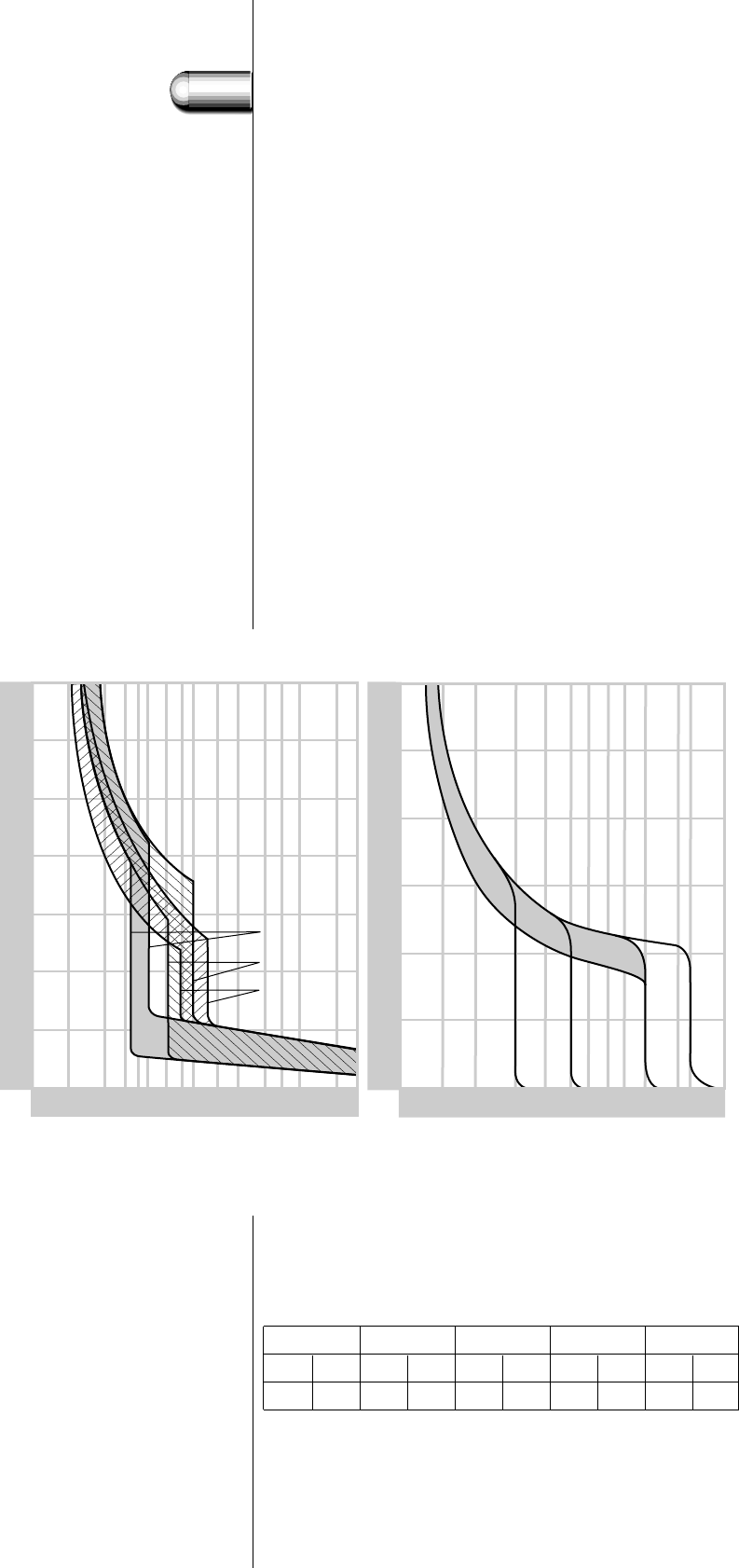
The same applies to main circuit breakers (MCB’s).Although the
switching characteristics of MCB types are laid down in
recommendations like CEE-19-2
nd
edition, the various characteristics
of different types and brands can differ considerably.
Circuit breakers are tested and calibrated to carry 100 per cent of their
rated current in open air at a specified temperature, normally 25 ºC.
When mounted in an enclosure, the ambient temperature may be
higher.As a result,circuit breakers are permitted continuously to carry
only 80 per cent of their current rating.The manufacturer’s technical
information should be carefully reviewed to determine the exact
capabilities of a specific breaker.
Main circuit breakers work on two principles:
1) The thermal part, being a bi-metal strip, which is heated by the
passing current.The switching-off characteristic is similar to that of
a fuse and is influenced by time and current value. It is effective after
approx. minimum 2 to 5 seconds for the smaller overload currents.
2) The electromagnetic part,being a magnet coil,which is effective for the
high overload currents and reacts within milliseconds (see Fig. 140).
For lighting applications the less sensitive types of circuit breakers are
advised, such as the U-, K-, C- or D types.
Taking the 10 A MCB type C as a reference (with a load assumed to be 1),
then the other types can handle loads as shown in the following table:
C-type B-type L-type U-type K-type
10 A 16 A 10 A 16 A 10 A 16 A 10 A 16 A 10 A 16 A
1 1.6 0.6 1 0.7 1.1 1.3 2.1 1.5 2.5
5
146
Fig. 140. Switching characteristics
of various types of main circuit
breakers.
3.18 Circuit breakers, fusing and earth leakage
10000
1000
100
10
1
0.1
0.01
0.001
10000
1000
100
10
1
0.1
0.01
1
2
0.5
5
7
10
20
30
50
70
100
200
300
1
1.5
2
3
4
5
6
8
10
15
20
30
3
BCD
multiple of nominal currentmultiple of nominal current
switching time (s) switching time (s)
L-curve
U-curve
K-curve
According to CEE-19-2
nd
edition (L, U and K)
According to EN 60898 / VDE 0641 (B, C and D)


















